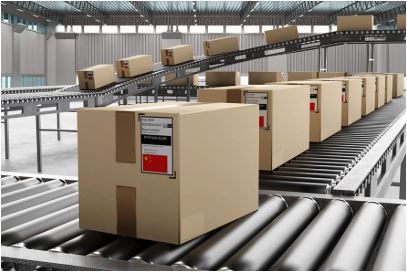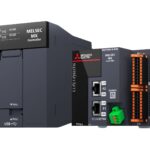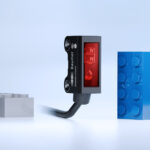At recent tradeshows such as LogiMAT and ProMat 2025, automated packaging companies were notably more visible. While these vendors have traditionally participated in such events, this year they were positioned more prominently on the show floor, often with larger booths and a stronger presence overall. In addition, their names came up more frequently across other warehouse automation vendors’ displays and conversations. This increased visibility suggests that automated packaging is playing a more significant role in broader system integration efforts, pointing to its growing importance in end-to-end warehouse automation strategies.
Major industry drivers
While automation has made significant strides in labour-intensive areas like picking and palletizing, packaging has lagged behind until recently. But as more parts of the warehouse become automated, packaging is emerging as a growing area of focus for end-customers.
This shift appears to be driven partially by evolving regulations, most notably, the European Union’s Packaging and Packaging Waste Regulation (PPWR). These rules push for more efficient use of space, a reduction in single-use plastics, and stronger sustainability standards; all of which align closely with the capabilities of automated packaging systems. In turn, vendors are responding with solutions that move away from poly auto-bagging toward either more sustainable paper-based alternatives or systems flexible enough to handle both.
In the United States, environmental policies also play a role, with states’ Extended Producer Responsibility (EPR) frameworks putting more pressure on manufacturers and distributors to reduce the environmental impact of their packaging. As a result, there’s increased interest in systems that not only streamline packaging but also support better data tracking of the material used and right-sizing to cut down on excess material.
Conversations with packaging vendors also highlighted that this momentum isn’t being driven by regulation alone. Emission goals set by major corporations, along with shifting consumer preferences are proving just as influential. For example, McKinsey reported that nearly half of consumers are willing to pay more for sustainable packaging. This growing demand for sustainable packaging is helping right-fit solutions from providers like Packsize and CMC gain traction, offering more precise dimensional control, lower dim-weight shipping costs, and reduced waste. These technologies deliver both sustainability benefits and operational savings, making them an increasingly compelling part of broader warehouse automation strategies.
Innovations in automated packaging solutions
ProMat 2025 saw a noticeable increase in the presence of automated bagging solutions, with a wide range of semi-automatic and fully automatic systems on display. Companies like PAC Machinery, Sitma, Tension Packaging, Rennco, and Garrido showcased machines designed to support varying levels of automation, reflecting growing interest in streamlining packaging processes.
Two standout trends emerged from the show: greater material flexibility to support sustainability goals, and the growing adoption of right-fit technology within automated bagging systems. A key takeaway was the emphasis on dual-material capabilities, particularly in response to tightening regulations such as the EU’s PPWR and emerging state-level EPR policies in the US. As pressure mounts to reduce plastic usage, suppliers are moving toward more sustainable options. Ranpak’s introduction of a paper-based stretch wrapper was a strong example of this shift, highlighting that development is already underway, even if broader demand is just beginning to ramp up.
Right-fit capabilities, once primarily associated with box-making systems from companies like CMC Machinery, Packsize, and Sparck, are now gaining traction in the automated bagging space. Autobaggers are increasingly able to produce mailers tailored to the product size, helping to reduce material use and shipping costs – goals that align with both environmental targets and operational efficiency.
There was also a clear move toward making automated packaging systems easier to integrate into larger end-to-end automation projects. Traditionally, end-of-line packaging was treated as a bolt-on solution, with system integrators often choosing vendors based on cost rather than fit. That model appears to be evolving. Packsize’s recent launch of the X6 right-size boxer points to a shift toward packaging solutions that are purpose-built for integration into fully automated environments. The company’s growing partnerships with system integrators also signal a broader recognition that packaging is no longer just the final step, it’s becoming a more strategic part of the overall automation strategy. For integrators, having a track record of successfully deploying these systems could increasingly be a key differentiator.

Automated packaging companies are increasingly looking to partnerships and acquisitions
Final thoughts
Broadly speaking, developments in the automated packaging sector appear to be moving in two key directions: a shift toward solutions that support more sustainable materials and reduce waste in line with tightening environmental regulations; and a push for more plug-and-play systems that simplify integration into larger warehouse automation projects.
As regulatory pressure increases and customers place greater value on sustainability, demand for automated packaging systems that can meet these requirements is likely to rise. At the same time, as packaging is requested as part of end-to-end automation strategies more often, the need for seamless integration is prompting collaboration between system integrators and automated packaging vendors. This could lead to deeper partnerships across the ecosystem, with integrators leveraging their experience in automating packaging workflows as a competitive edge, especially when targeting manufacturers and retailers that place a strong emphasis on end-of-line automation.
Here at Interact Analysis, we are investigating global trends in the automated packaging sector for the first edition of our Packaging Machinery in End-of-Line and Warehouse Applications report. If you are interested in the report or want to know more about the sector, please reach out to our analysts Vanessa Lopez or Rowan Stott.








